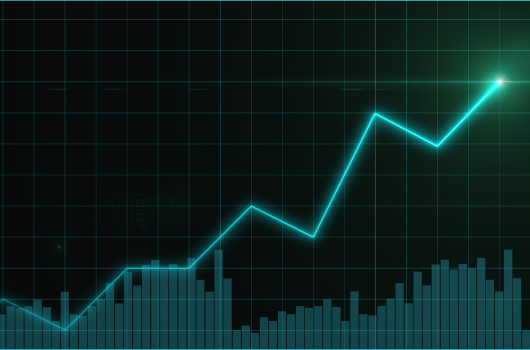The economy grew in Q1, according to the CZSO estimate
Economic commentary by Jakub Seidler, Chief Economist of the CBA

According to the preliminary estimate published today by the CZSO, the domestic economy grew by 0.5% quarter-on-quarter (vs. 0.4% in 4Q23) and by 0.4% year-on-year (vs. 0.2% in 4Q23). According to Reuters, the analyst consensus was expecting quarterly growth of 0.4% qoq (yoy +0.3%). The older winter CNB forecast expected growth of 0.2% qoq, while the more recent April finance ministry forecast expected growth of 0.4%. The preliminary figures thus came as a mildly positive surprise, although there were also estimates among analysts predicting growth of around 0.5% (the range of estimates according to Reuters was 0.2-0.6 qoq).
The preliminary estimate released today does not yet specify the details of the GDP development, the statistics office only said that "overall final consumption expenditure and the growing foreign trade balance contributed to the year-on-year growth. On the contrary, gross capital formation continued to decline".
Although the structure of growth will not be published until the end of May and the CSO comments mainly on year-on-year developments, according to interim estimates and data, it is evident that quarter-on-quarter growth was driven by an acceleration in household consumption and an acceleration in exports. Quarter-on-quarter growth is thus the highest since Q1 2022, while year-on-year growth has been the highest since Q3 2022 (see Chart 1).
The domestic economy has thus been growing for two consecutive quarters, but still remains, together with Finland, the only one in the EU that has not yet reached the pre-pandemic GDP level of late 2019 (see Chart 2). This is due to several factors, the most important being a significant drop in household consumption, which is surprisingly strong even compared to other EU countries. This is mainly due to the fact that the fall in real wages was among the highest in the Czech Republic. However, other effects may also be at play, such as households' purchases abroad, which were not sufficiently captured in the official figures, or the transition to the grey economy (Chart 3).
Today's figures were thus a positive surprise and confirmed the slightly optimistic turn in foreign demand and household consumption that has been evident in the data for the past few months. This brings more favourable revisions to the outlook for this year, with most estimates again coming in slightly above the 1% mark. Today's advance estimate confirms these improvements in estimates, although risks remain and leading indicators are providing mixed messages at times. Last year, GDP fell by 0.2%.